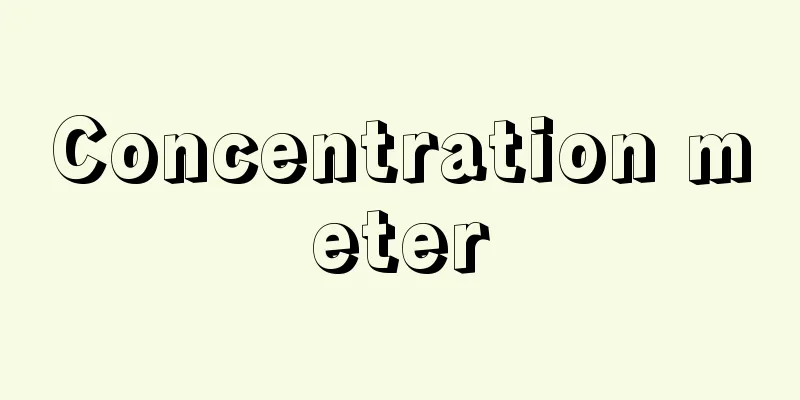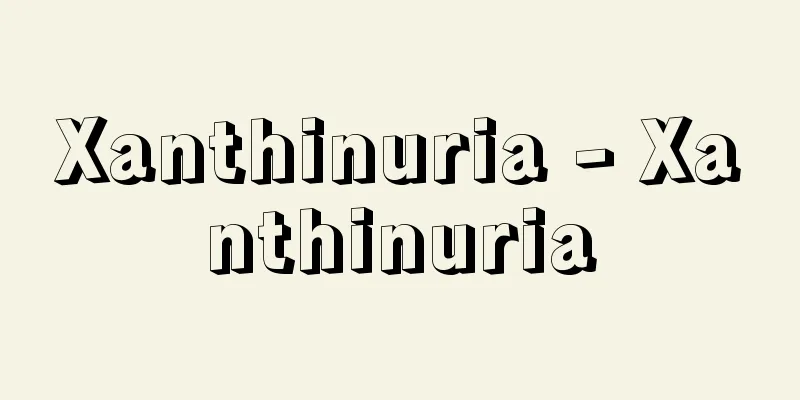Concentration meter

|
A general term for an instrument that measures the concentration of a solution. A variety of units are used to express concentration, including mass percentage, volume percentage, molar fraction (ratio of moles), and specified concentration. There are also many different principles and methods for measuring concentration, each of which is used depending on the object and purpose of measurement. As a result, there are an extremely large number of types of instruments called concentration meters, and their uses are also wide-ranging, including chemical analysis, medical testing, production management, quality testing, hygiene management, and pollution monitoring. The main concentration meters are classified according to their principle. First, there are various automatic titration devices that use chemical methods. In titration, a standard solution of a reagent that undergoes a specific chemical reaction with the sample component is dropped into the sample solution, and the content of the sample component is calculated from the volume (or mass) of the standard solution required to reach the equivalence point of the reaction. Concentration meters using the titration method are devices that detect the equivalence point and measure the volume (or mass). The equivalence point can be detected by optical methods (detection of discoloration point, detection of turbidity), electrical methods (detection of potential difference, detection of electrical conductivity), temperature measurement, and other methods. Concentration meters that use physical methods include those that use the relationship between specific gravity to determine concentration from specific gravity measurements, those that similarly determine concentration from electrical conductivity measurements, those that perform colorimetric analysis using a spectrophotometer, those that measure refractive index and optical rotation (angle of rotation of the plane of polarization), and various spectroscopic analyzers. It is generally difficult for a concentration meter to maintain its own standard, so it is often used while checking the readings using a standard solution. In particular, for samples containing many components, unexpected errors are likely to occur, so calibration with a standard sample is essential. International standards have been established for widely used instruments such as pH meters (hydrogen ion concentration meters using the potentiometric method), refractometers for measuring sugar concentration, and infrared analyzers, and their performance and specifications are standardized. [Mitsui Kiyoto] [Reference] | | | | |Source: Shogakukan Encyclopedia Nipponica About Encyclopedia Nipponica Information | Legend |
|
溶液の濃度を測定する計器の総称。濃度を表すには、質量百分率、体積百分率、モル分率(モル数の比)、規定濃度など種々の単位が用いられる。また、濃度を測定する原理、方法にも多くの種類があって、それぞれ測定の対象や目的に応じて使い分けられている。したがって、濃度計とよばれる計器の種類はきわめて多く、その用途も化学分析、医学上の検査、生産管理、品質試験、衛生管理、公害監視など広範である。 おもな濃度計を原理別にあげると、まず、化学的方法を用いる種々の自動滴定装置がある。滴定とは、試料成分と特有の化学反応をする試薬の標準溶液を試料溶液に滴下し、反応の当量点に達するまでに要した標準溶液の体積(または質量)から試料成分の含有量を求めるもので、滴定法による濃度計は、当量点の検出と体積(または質量)の測定を行う装置である。当量点の検出には、光学的方法(変色点の検出、濁りの検出)、電気的方法(電位差の検出、電気伝導度の検出)、温度測定による方法その他が用いられる。物理的方法を用いる濃度計としては、比重と濃度の関係を利用して比重測定から濃度を求めるもの、同様に電気伝導度の測定から濃度を求めるもの、分光光度計などを用いて比色分析を行うもの、屈折率や旋光度(偏光面の回転角)の測定によるものなどのほか、種々の分光分析計が用いられる。 濃度計は一般にそれ自身で標準を維持することが困難であるため、標準溶液などを用いて示度を確かめながら用いる例が多い。とくに、多数の成分を含む試料については予想外の誤差が生じやすいので、標準試料による校正が不可欠である。広く用いられる器種、たとえばpHメーター(電位差法による水素イオン濃度計)、糖分濃度を測定するための屈折率計や赤外線分析計などについては国際的な規格が設けられ、性能、仕様が標準化されている。 [三井清人] [参照項目] | | | | |出典 小学館 日本大百科全書(ニッポニカ)日本大百科全書(ニッポニカ)について 情報 | 凡例 |
<<: Agriculture and Calendar - Erga kai Hēmerai
>>: Emancipation of Serfs - Noudokaihou
Recommend
Tsuchisugari - Tsuchisugari
It can refer to a species of the Hymenoptera fami...
flock
…It is a general term for a group of animals. In ...
Aboriginal - Aborijinaru
...refers to the indigenous people who lived on t...
Dundee
An industrial and port city in the east of Scotlan...
Lysimachia genus - Okatora no Ozoku
...In poor soil, oil cakes and other nutrients ar...
Eudromia elegans (English spelling)
...They live alone in pairs and do not form large...
Kawai [village] - Kawai
A village in Shimohei County, central Iwate Prefec...
League of Lombardy Cities - League of Lombardy Cities
In the Middle Ages, the Lombardy League of Norther...
U Ottama
1880‐1939 A Burmese monk. A martyr who continued t...
Isakoviĉ, A.
...A country that existed in the western Balkan P...
Saatwick
…It is also called the big vetch. It was introduc...
Hirata [city] - Hirata
An old city occupying the northeastern part of Shi...
francium
Fr. An element with atomic number 87. It is an al...
Ecclesia (Christianity) - Ecclesia
...In this sense, Christian artists of every era ...
Sébastien Le Prestre de Vauban
French soldier and fortifier. Born to a minor nob...

![Chosei [village] - Chosei](/upload/images/67cc35fabd241.webp)







